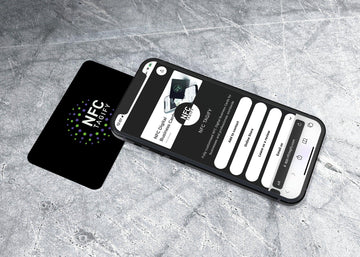Are Digital Business Cards Secure? - Infographic

Contents
In the era of digitalisation, the security of digital business cards, especially those using NFC technology, is a vital concern. This article delves into the safety features of NFC-enabled digital business cards and addresses common security questions.


-
Proximity-Based Security:
- NFC cards work within a very short range, typically a few centimeters, ensuring that data transfers can only occur between devices in close proximity. This limited range is a fundamental security feature, as it requires physical presence for data transfer, reducing the risk of unauthorized access.
-
User Initiation for Data Transfer:
- A key security feature of NFC tags is user initiation. This allows the user to control when and where data is transferred by requiring an active action, like tapping the NFC-enabled device close to the tag. This adds a layer of security by ensuring that data transfer only happens with the user's consent.
-
Secure Element (SE) Validation:
- NFC tags utilize Secure Element validation, a process that authenticates the tag and ensures it has not been tampered with. This method involves verifying a unique Application Identifier (AID) from the tag against a database of known valid AIDs, preventing unauthorized access and protecting against various forms of cyber attacks.
Security Considerations: While NFC technology is secure, it's not entirely fool proof. Risks such as potential unauthorized wireless network access exist. However, these risks are minimal, and encryption and tokenization techniques can mitigate them. The information typically shared via NFC digital business cards, like contact details, does not pose significant security threats compared to sensitive data like banking details.
Benefits of Digital Business Cards: Digital business cards offer numerous advantages over traditional cards:
- Environmentally friendly, as they reduce paper and ink usage.
- Convenient for sharing and updating contact information.
- Ability to store more data, including links to online profiles and resources.
- Accessible from any device, eliminating the risk of loss.
- Updateable, ensuring contacts always have your latest information.
In Conclusion: NFC digital business cards provide a secure and efficient way to share contact information. Their proximity-based communication, user-initiated transfers, and SE validation make them a safe option for professional networking. While no technology is 100% secure, the risks associated with NFC digital business cards are minimal and manageable.
Affordable Custom Printed Business NFC Cards: At NFC Tagify, we offer custom-printed NFC digital business cards in various materials and storage capacities to suit your needs. Visit our website to explore our samples, or contact us at +44 16 0080 0080 for more information.









